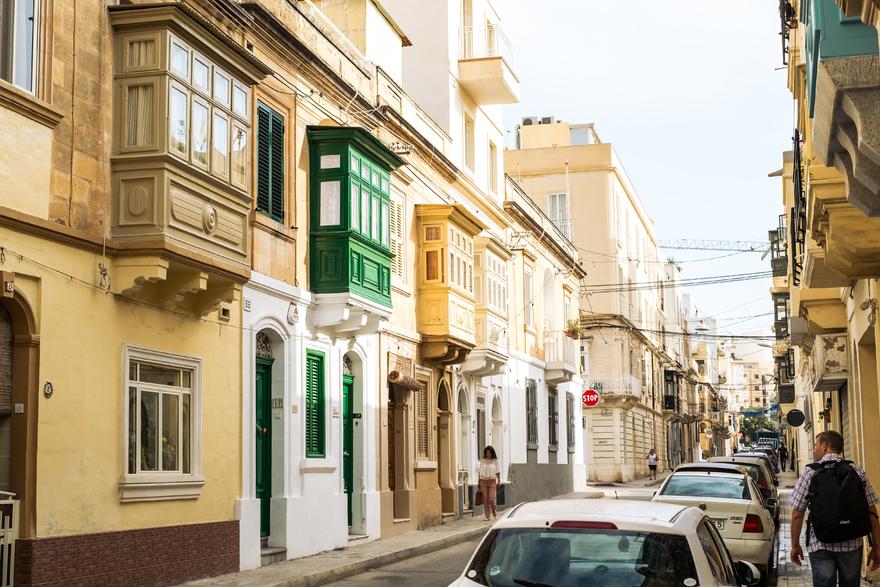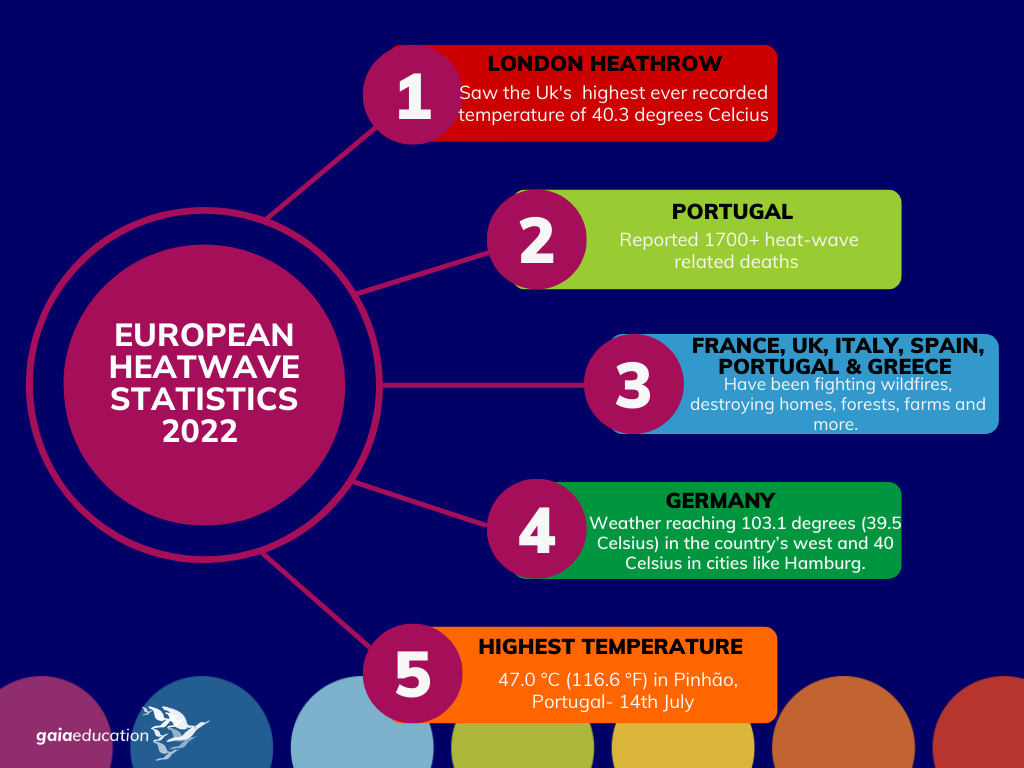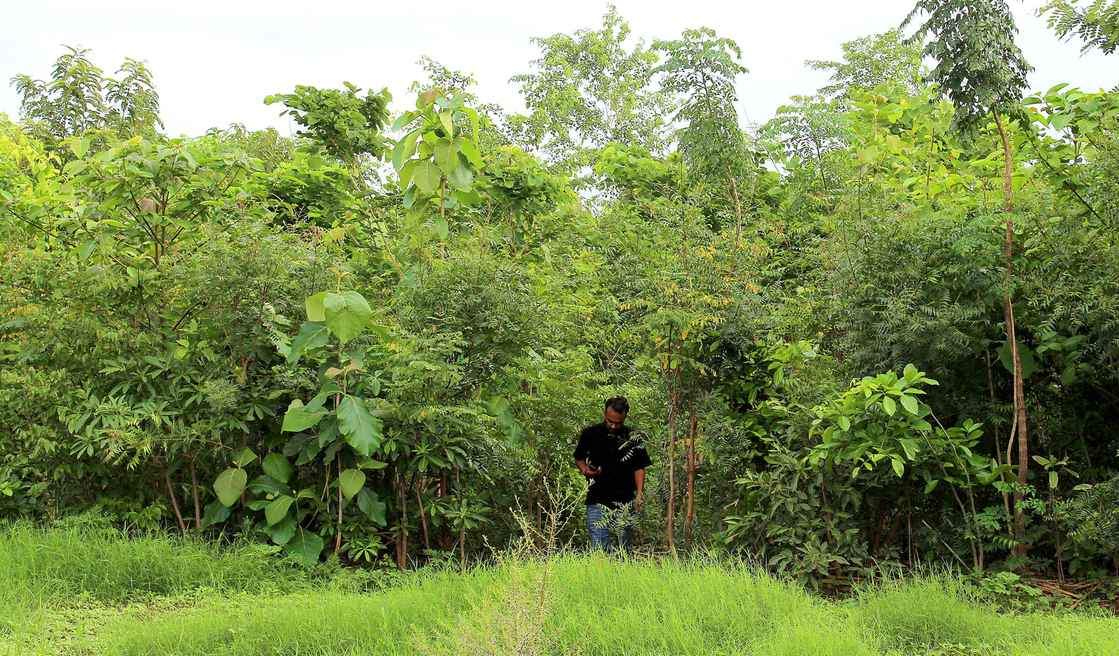How do we cool our cities as temperatures sore & heatwaves increase?

If you've been sweating in your linens this summer and sticking your head in the fridge to get respite from the heat, you're not alone. Europe & other parts of the world are experiencing more intense and frequent heat waves yearly. Although there are many reasons this is happening; warming of the oceans, melting of the polar ice caps, changes in the jet stream and global warming, 'natural climate variability can make it difficult to tease out specific influences'...
One thing's certain; human activity is directly accelerating and impacting global warming. 'And global warming plays a role in heat waves around the world because temperatures are, on average, about 1.1 degrees Celsius higher than they were in the late 19th century... Giving extreme heat a higher starting point.'

(Graph by Gaia Education, statistics from; Washington Post, BBC, Indian Express.)
As news coverage films wildfires burning our mountainous and rural regions, we ask, what about the cities? Cities worldwide are being hit just as hard by the heat, and thanks to phenomena like 'The Heat Island Effect', cities are 10 degrees Celsius hotter than our rural counterparts. During a webinar in November last year, we spoke with ecological educator, writer and co-originator of the permaculture concept David Holmgren, who projected that 'by 2050 68% of the world's population will live in cities' (Sign up for our Webinar Series to re-watch the discussion here.)
So how can we help curb heat in our cities? (no pun intended.)
Well, urban planning has a lot to answer for. Architects can create urban sky gardens, adding plants and vegetation to the outside of buildings, more trees can be planted to line our streets, roofs can be painted with light reflective coatings, and water misters at local bus stops can spray cooling mist as you wait for the number 33... But let's face it, not all cities can afford these measures, and we want to educate you and your community on how you can make a hands-on difference in your local area.
Here are our top four Gaian ways to regenerate an urban plot;
- Restore urban waterways with floating gardens and wildlife habitats like Lisa Shaw does from Biomatrix Water. This not only cools city waterways but provides vibrant habitats for wildlife, promotes biodiversity, improves water quality, provides natural wastewater treatment and improves the health and well-being of those who live near or visit the area.

- Convert barren land in your area by creating a Tiny Forest just like Daan Bleichrocht from IVN. Based on a planting technique from Japan called the 'Miyawaki Method', it creates a strong ecosystem for native trees, promoting biodiversity and a peaceful place for local wildlife and people. And it's been proven that urban forests can reduce the urban heat island effect.

- Restore and transform your urban garden into a thriving edible ecosystem like Rishi Kumar, the Executive Director of Sarvodaya Institute. Discover how a '(sub)urban world can transition away from isolation and consumption and towards creativity, community, and connection.' Creating a cooling effect from vegetation and means to feed your family.

4. Learn and adopt sustainable home techniques that help to regenerate the land and use resources in a circular way, as Daniel Valdiviezo did from Navi Village.
All the above people are teachers, and their techniques are waiting to be unearthed when you join us on our Ecosystem Restoration Design Course.
We want you to understand that small-scale, local change makes a big difference. You don't need much space - sustainability starts with you, your yard, garden, balcony, park or pond...We can all contribute to cooling our local urban area and promoting well-being for ourselves and wildlife whilst improving biodiversity! It's a win-win.
All the techniques featured in this article are from 'Module 3 - Restoring Urban Ecosystems - Registrations are now open with the added flexibility and luxury of studying one module at a time, in your own time.
Follow the links below for more 'cool' urban resources that not only reduce temperatures with small green spaces but build a connection to nature and community and inspire creativity;
Urban rewilders - turning parking spaces into parklets.
London Parklets Campaign
The Gardening Gangster - Ron Finley.
Guerrilla Gardening
Small green spaces can help keep cities cool.
Check out David Holmgren's book - Retro Suburbia, "The downshifter's guide to a resilient future."
Do you know of any cool urban/suburban initiatives? Share your wisdom with us; we love to learn!


0 comments
Leave a comment